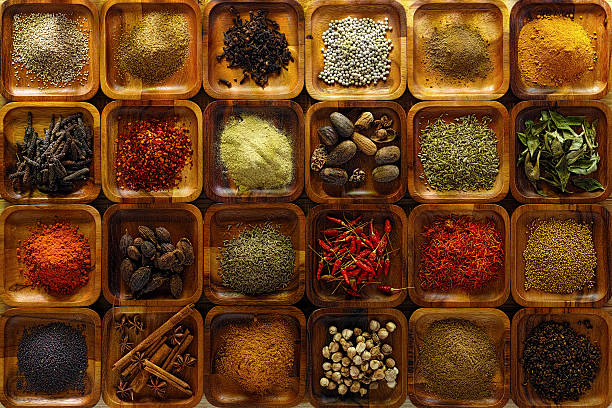Introduction
In the enchanting realm of culinary arts, one finds the allure of flavors that transcends geographical boundaries. Among the myriad of ingredients that contribute to the symphony of tastes, “Royal Spices” stand out as the epitome of opulence and refinement. This article delves into the rich history, diverse origins, and the mesmerizing impact of these regal ingredients on global cuisines.
Unveiling the Origins:
A Historical Tapestry:
The roots of royal spices can be traced back to ancient civilizations that valued these precious culinary gems not only for their flavor but also for their medicinal properties. Civilizations such as Mesopotamia, Egypt, and the Indian subcontinent played pivotal roles in the cultivation and trade of spices, setting the stage for the global spice trade routes that would later connect distant lands.
Spice Routes: Connecting Continents
The spice routes, often romanticized as the Silk Road, were intricate networks of trade that linked the East and West, bringing exotic spices to the tables of emperors and kings. This exchange not only influenced culinary practices but also shaped cultural identities and fueled the desire for exploration.
The Regal Pantheon of Spices:
Saffron – The Crown Jewel
Saffron, derived from the delicate stigma of the Crocus sativus flower, reigns supreme as the most expensive spice globally. Its intense flavor and vibrant color have earned it a coveted place in the kitchens of royalty throughout history. From Persian saffron rice to Spanish paella, saffron’s touch elevates dishes to a regal status.
Cardamom – The Queen of Spices
Hailing from the lush landscapes of India, cardamom has earned its title as the “Queen of Spices.” Its fragrant, citrusy notes have graced the palates of monarchs and aristocrats for centuries. In Scandinavian and Middle Eastern cuisines, cardamom lends its unique charm to both savory and sweet dishes.
Cinnamon – A Spice Fit for Kings
Cinnamon, with its warm and sweet aroma, has been a symbol of luxury since ancient times. A favorite in both sweet and savory dishes, cinnamon’s versatility has led it to become a staple in royal kitchens across the globe. From Indian biryanis to European desserts, this spice weaves its magic into a tapestry of flavors.
Vanilla – The Orchid Elixir
Originating from the delicate orchid flowers, vanilla’s subtle and sweet nuances have enchanted palates for centuries. Once reserved for the elite, vanilla is now a ubiquitous flavor in desserts and beverages worldwide. Its journey from the tropics to the tables of monarchs showcases the global appeal of royal spices.
Culinary Alchemy:
Fusion of Flavors
The integration of royal spices into various cuisines has given rise to a culinary renaissance. Chefs, inspired by the rich history of these ingredients, experiment with flavor profiles, creating innovative dishes that pay homage to tradition while embracing modernity. The fusion of Eastern and Western culinary techniques has birthed a new era of gastronomic delights.
Royal Spice Blends
The art of crafting spice blends is a tradition that has been passed down through generations. From garam masala in Indian cuisine to ras el hanout in Moroccan dishes, these intricate combinations of royal spices showcase the mastery of culinary artisans. Each blend tells a story of heritage, geography, and the collective wisdom of generations.
Beyond Borders: A Global Affair
Cultural Exchange Through Cuisine
The global embrace of royal spices symbolizes a harmonious cultural exchange. As these spices traverse continents, they carry with them the essence of diverse culinary traditions. The cross-pollination of flavors has given rise to a global palate that celebrates the uniqueness of each spice while appreciating the symphony they create together.
The Modern Spice Trade
In the 21st century, the spice trade has evolved beyond the historical routes, taking on new dimensions with the advent of globalization. Today, royal spices are accessible to home cooks and chefs alike, allowing individuals to embark on their own culinary journeys. The spice bazaars of old have transformed into online marketplaces, bringing the regality of spices to doorsteps around the world.
Future Trends and Innovations:
Sustainable Spice Practices
As the demand for royal spices continues to rise, there is a growing emphasis on sustainable and ethical sourcing practices. Initiatives aimed at preserving biodiversity, supporting local farmers, and ensuring fair trade are gaining momentum. The future of royal spices lies in a harmonious balance between indulgence and responsibility.
Rediscovery of Ancient Varieties
The quest for unique and authentic flavors has led to a resurgence of interest in heirloom and ancient spice varieties. Rediscovering forgotten spices adds depth and dimension to culinary creations, providing a link to the past while embracing the innovation of the future.
Conclusion:
In the grand tapestry of culinary history, royal spices emerge as threads that weave together cultures, traditions, and flavors. From the opulent courts of ancient civilizations to the contemporary kitchens of today, these precious ingredients continue to captivate and inspire. As we savor the regal essence of spices, let us celebrate the diverse and interconnected world of flavors that transcends borders and enriches our shared culinary heritage.







